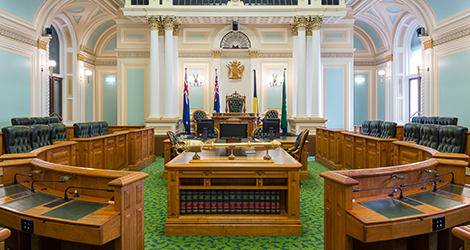Tas farmers most optimistic in the nation – buoyed by sector outlook
Tasmanian farmers are reporting the highest confidence levels in the nation, buoyed by the positive outlook for the state’s agricultural sector, the latest Rabobank Rural Confidence Survey has found.
A strong lift in Tasmanian farmer sentiment in the past quarter has seen the state’s rural confidence sitting at levels well above those reported on mainland Australia.
The positive outlook continues to fuel investment in the sector, with a third of the state’s farmers looking to increase investment in their farm business over the coming year – compared with 19 per cent nationally.
Rabobank branch manager Tasmania Kathryn Brown said while there was prevailing positive sentiment in the sector – underpinned by strong commodity prices – seasonal conditions were disparate in the north and south of the state.
“You can essentially draw a line across the state,” she said, “with those north of Campbell Town and Ross enjoying one of their best seasons ever, while it remains very dry in the south-east as farmers there brace for a tough winter.”
Overall, the latest survey found the number of Tasmanian respondents expecting agricultural economic conditions to improve over the next 12 months had more than doubled – with 26 per cent now holding this view, up from 10 per cent in the previous survey.
Of those with a positive outlook, 55 per cent cited commodity prices as the reason for their optimism. Seasonal conditions were a positive driver for 43 per cent.
Meanwhile those expecting agricultural economic conditions to remain similar to last year stood at 66 per cent, and just eight per cent had a negative outlook on the 12 months ahead (down from 20 per cent in March).
Ms Brown said while the east coast of the state was “looking for a big drink”, producers in the north-west were having a good season, with “some saying it is their best season ever”.
“Season-wise, it really is a state of two halves,” she said, “but thankfully commodity prices remain strong for livestock and wool – particularly lamb, with some producers locking in forward price contracts at very attractive levels. And for those that have access to water to grow fodder crops for stock, they have been able to reduce the reliance on buying in feed, which remains expensive.”
The survey found sentiment to be particularly strong among sheep and dairy producers, with both sectors posting an upswing in sentiment, Ms Brown said.
“Confidence has really turned around in dairy,” she said, “with the closing price for this season’s milk price up significantly to around $6.05kg/MS. While signals suggest next season’s price could reach the high ‘sixes’ or even have a ‘seven’ in front.”
Ms Brown said while some dairy farmers had reduced their feed ration over the past 12 months to manage the high cost of feed, some producers would be “turning up the dial” and feeding at higher rates to increase production and take advantage of the higher milk prices.
Vegetable prices were also strong on the back of demand from export markets in Europe and also mainland Australia, she said, where some crops had been adversely affected by heatwave conditions earlier in the year.
“Tasmanian growers have also had a good run with harvesting and are reporting good yields,” she said. “While for those growing poppies, the ‘plantable’ area has been expanded in 2019/20 and there has been a price increase for specific varieties.”
Ms Brown said the positive trading conditions continued to support farm business investment, with 33 per cent of survey respondents looking to increase investment. While a further 62 per cent were intending to maintain investment at current levels.
The survey found investment intentions had strengthened among dairy farmers, in particular, with 55 per cent intending to increase investment, compared with 20 per cent in the March quarter.
This quarter, the survey also questioned farmers about their uptake and use of sensor technology, such as drones, moisture probes, yield mapping, EID (electronic identification) and auto drafting. This topic was last asked about in the survey in June 2017.
Ms Brown said although sensor technology use was reasonably low at 25 per cent, the survey found it was well up on two years ago when it was just 11 per cent.
“Generally it is the larger farming businesses that are the early adopters of this technology,” she said, “and this was reflected in the survey, with 48 per cent of farm businesses with an annual gross income above $1 million using the technology.”
A comprehensive monitor of outlook and sentiment in Australian rural industries, the Rabobank Rural Confidence Survey questions an average of 1000 primary producers across a wide range of commodities and geographical areas throughout Australia on a quarterly basis. The most robust study of its type in Australia, the Rabobank Rural Confidence Survey has been conducted since 2000 by an independent research organisation. The next results are scheduled for release in September 2019.





